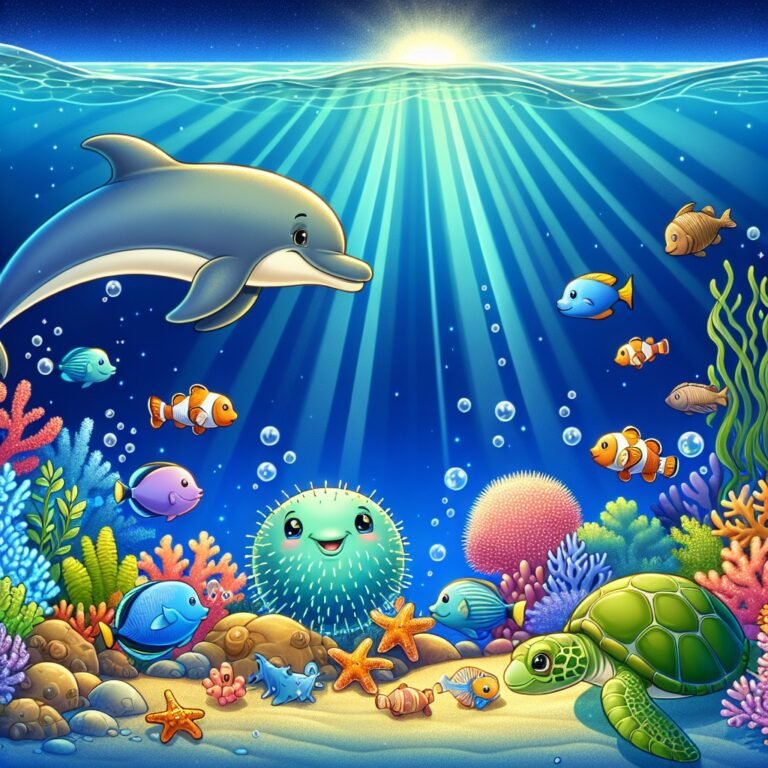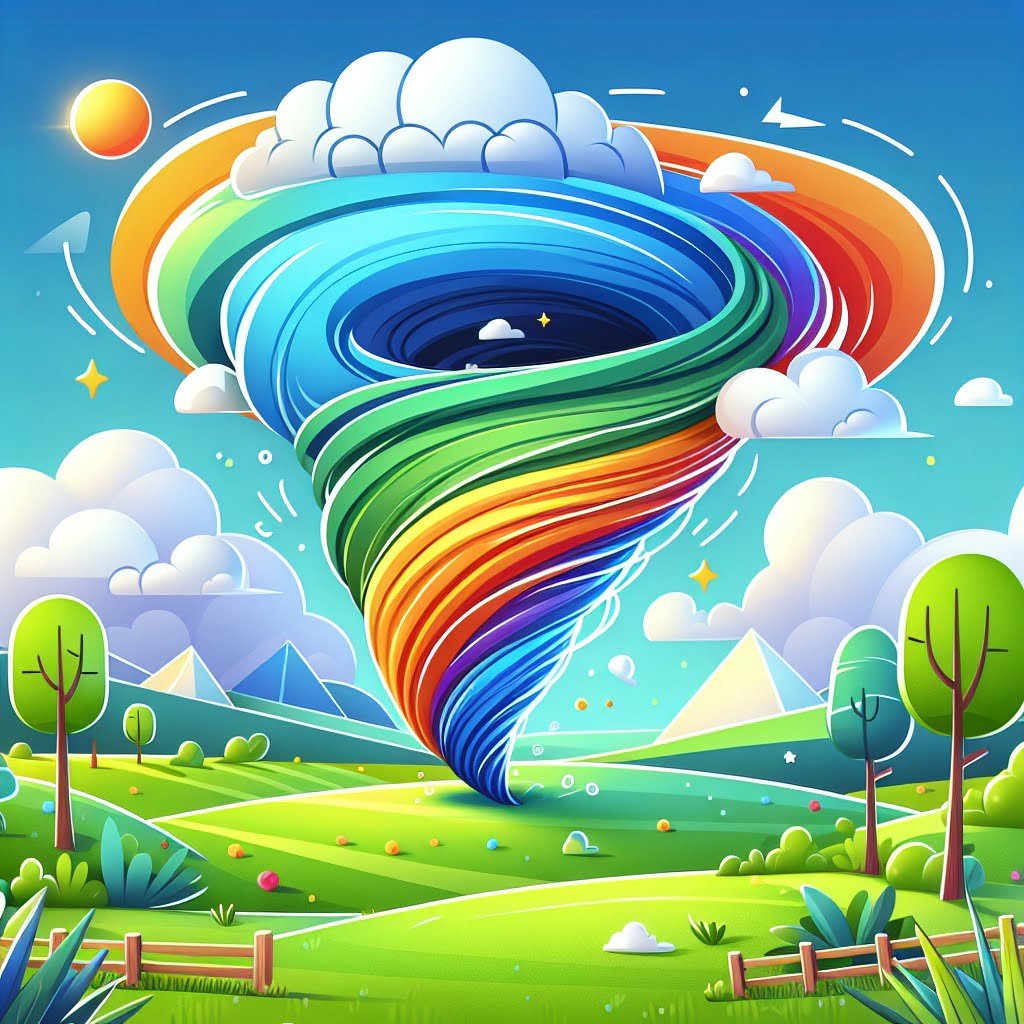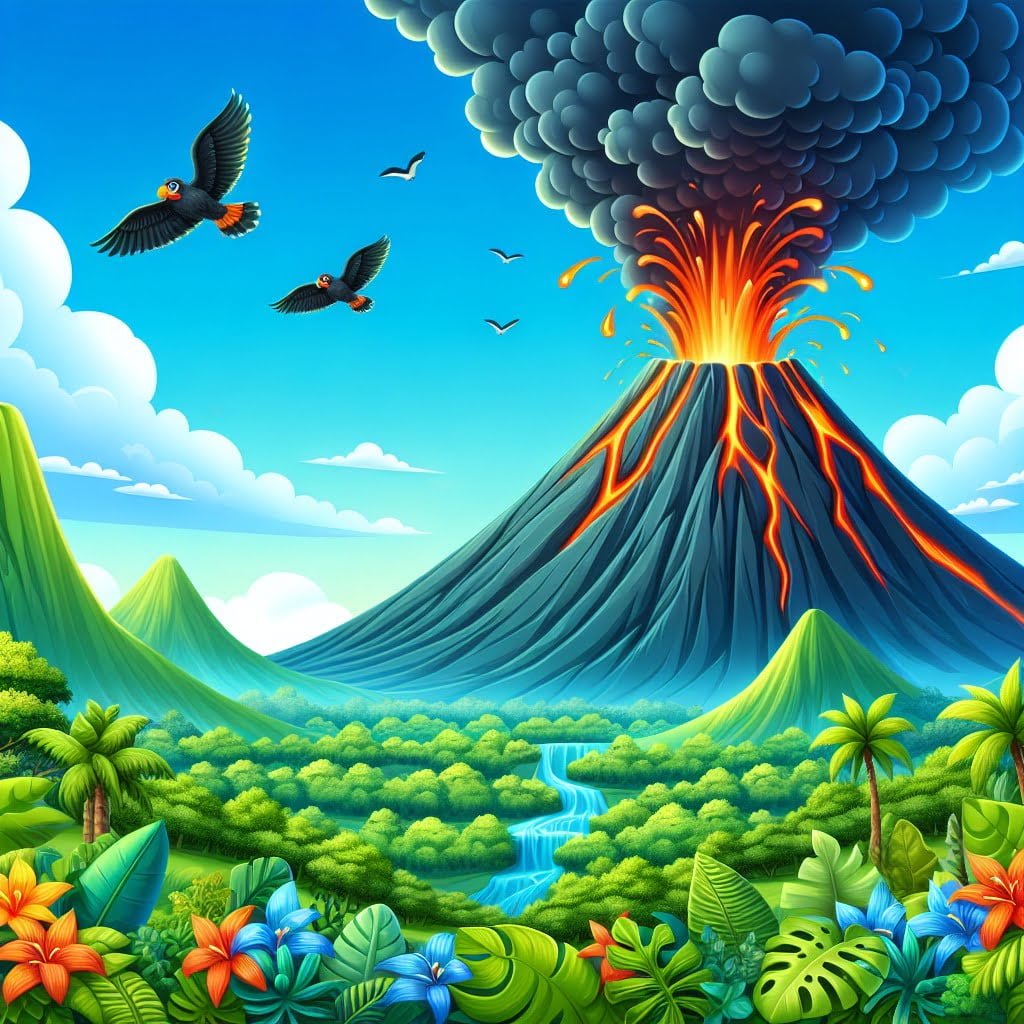Welcome to a treasure trove of fascinating Ocean Facts For Kids! Dive into the depths of the ocean with a plethora of fun and educational tidbits that will spark curiosity and wonder in young minds. From the incredible variety of marine species to the largest living structure on Earth, the Great Barrier Reef, and the mysterious legends of sea monsters like the Kraken, there is something for every young explorer to discover. Explore the importance of the ocean in producing oxygen, regulating climate, and providing habitat for a vast array of marine life. Join us on an exciting journey through the wonders of the ocean, where learning meets adventure and conservation. So, let’s embark on a voyage of discovery and unveil the marvels of the underwater world with these captivating Ocean Facts For Kids!
Ocean Facts For Kids
1. The Ocean Is Home to 230,000 Known Species
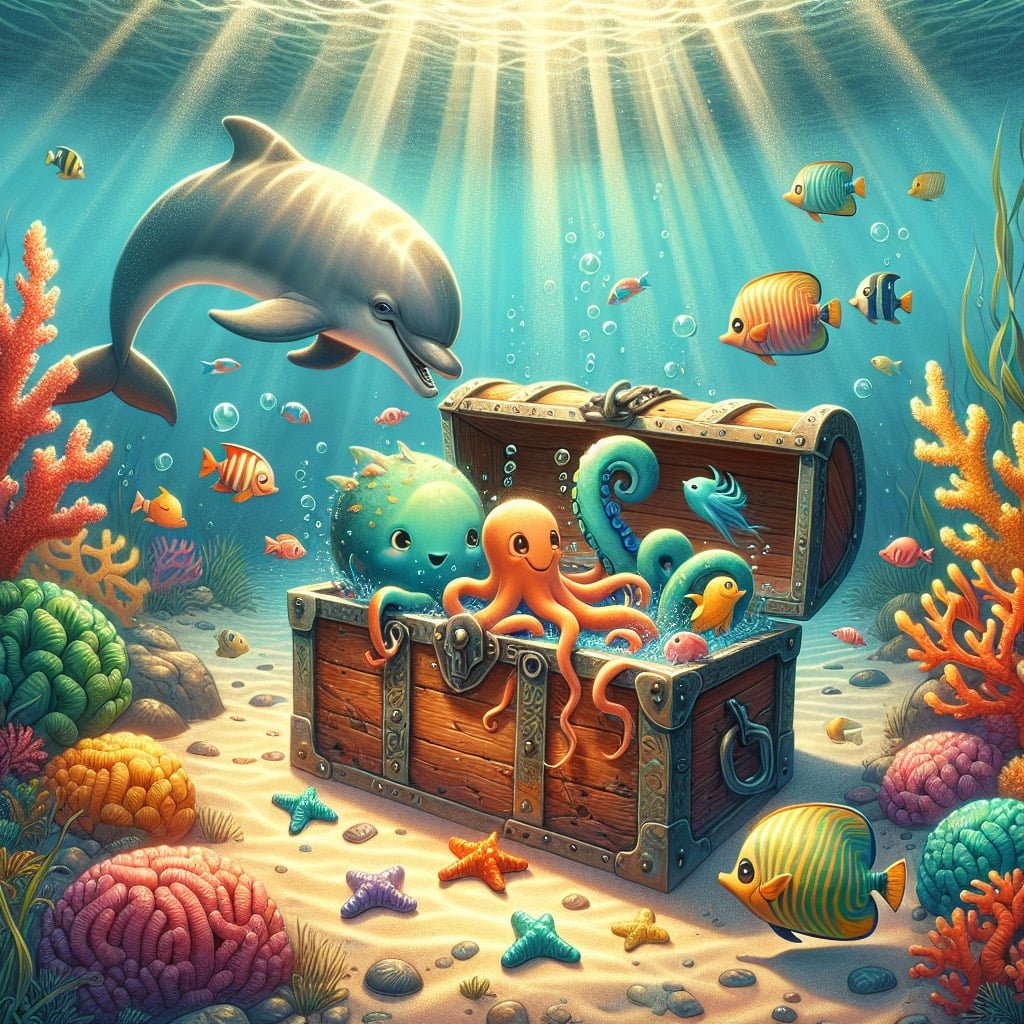
For younger kids: The ocean is like a big treasure chest full of different animals and plants!
For older kids: Scientists have identified around 230,000 species that call the ocean their home, and there are still many more waiting to be discovered and studied.
Detailed explanation:The Ocean is a vast ecosystem teeming with life, home to an estimated 230,000 known species. This incredible diversity of marine life is truly fascinating, and scientists are constantly discovering new species as they explore the depths of the ocean.
One of the most interesting Ocean Facts For Kids is the range of habitats that can be found within the ocean. From coral reefs to deep sea trenches, each habitat supports a unique array of marine species. Coral reefs, for example, are known for their vibrant colors and diverse marine life, including fish, sharks, turtles, and invertebrates. In contrast, the deep sea is home to bizarre creatures such as anglerfish, gulper eels, and giant squid.
The ocean plays a crucial role in supporting life on Earth. Phytoplankton, tiny marine organisms that live near the ocean’s surface, produce much of the oxygen we breathe through photosynthesis. Additionally, the ocean regulates the Earth’s climate by absorbing and storing carbon dioxide.
Unfortunately, the ocean is facing numerous threats, including pollution, overfishing, and climate change. These factors are putting immense pressure on marine ecosystems and contributing to the decline of marine species. Conservation efforts are underway to protect the ocean and its inhabitants for future generations to enjoy.
In conclusion, the ocean is a vast and diverse ecosystem that is home to a staggering 230,000 known species. By learning more about the ocean and the creatures that inhabit it, we can better appreciate the importance of protecting this valuable resource.
Ocean Facts For Kids
2. The Great Barrier Reef is the Largest Living Structure on Earth
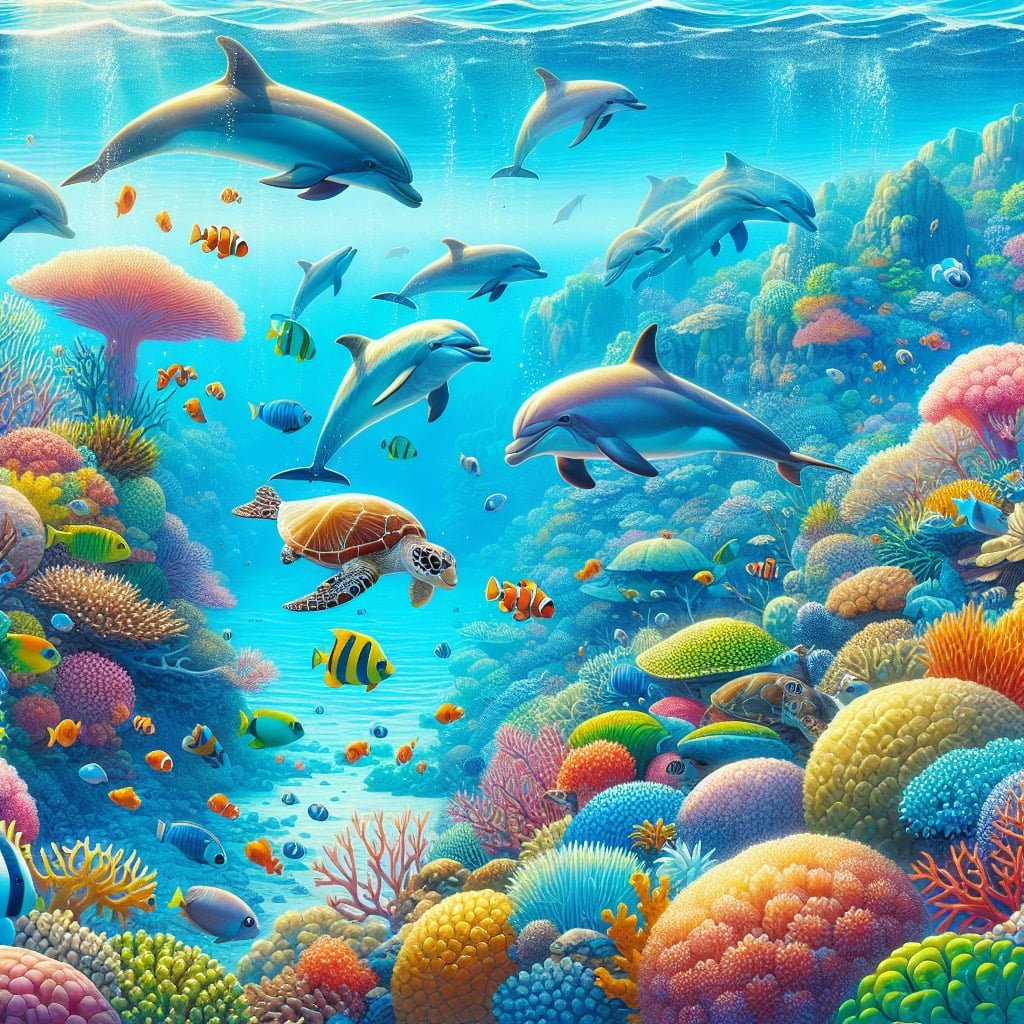
For younger kids: The Great Barrier Reef is like a giant underwater city for fish and corals!
For older kids: Stretching over 1,400 miles, the Great Barrier Reef in Australia is not only the largest coral reef system but also the largest living structure on the planet.
Detailed explanation:The Great Barrier Reef, located off the coast of Queensland, Australia, is truly a marvel of the natural world. Stretching over 1,400 miles, it is not only the largest coral reef system on the planet but also the largest living structure. This incredible ecosystem is home to a mind-boggling array of marine life, with thousands of different species of fish, coral, and other organisms calling it home.
One of the most fascinating Ocean Facts For Kids about the Great Barrier Reef is that it is actually made up of billions of tiny organisms known as coral polyps. These tiny creatures build their hard exoskeletons out of calcium carbonate, which over time accumulate to create the massive structures that we see today. The coral polyps rely on a symbiotic relationship with photosynthetic algae called zooxanthellae, which live within their tissues and provide them with energy in exchange for shelter.
Despite its size and importance, the Great Barrier Reef is facing numerous threats, including climate change, pollution, and overfishing. Rising ocean temperatures have led to mass coral bleaching events, where the coral expels the algae living within it and turns white. Without the algae, the coral is unable to survive and often dies. Additionally, pollution from runoff and plastic waste poses a serious threat to the delicate balance of the ecosystem.
It is crucial that we all work together to protect this incredible natural wonder for future generations to enjoy. By raising awareness about the importance of the Great Barrier Reef and taking steps to reduce our impact on the ocean, we can help ensure that this amazing Ocean Facts For Kids continues to thrive for years to come.
Ocean Facts For Kids
3. The Ocean Contains 97% of Earth’s Water
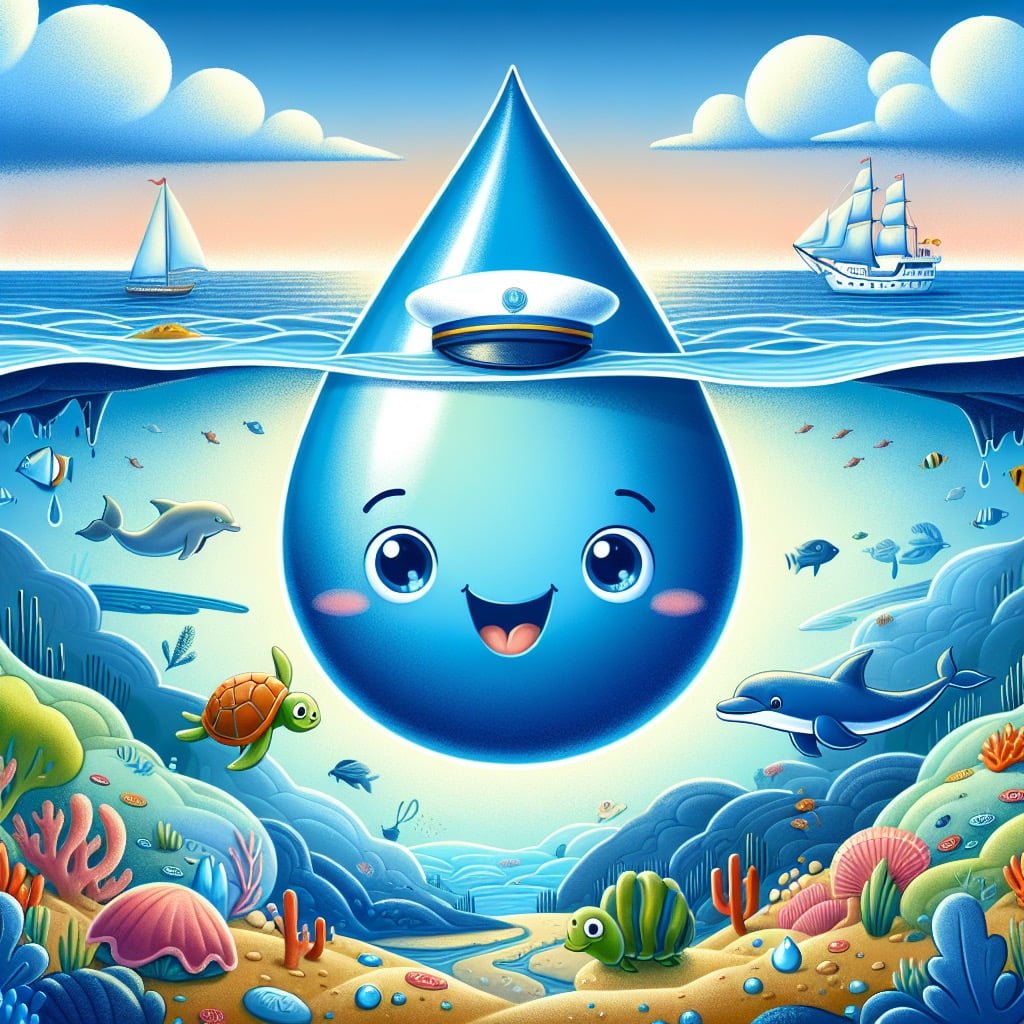
For younger kids: The ocean has almost all the water in the whole world!
For older kids: Only 3% of the Earth’s water is freshwater, and the remaining 97% is found in the salty oceans, playing a crucial role in regulating our planet’s climate and weather patterns.
Detailed explanation:When considering the vast amount of water on Earth, it is interesting to note that the ocean contains a staggering 97% of the planet’s water. This fact highlights the sheer volume and importance of the ocean in regulating the Earth’s climate and supporting life on our planet.
One of the most fascinating Ocean Facts For Kids is that the ocean plays a crucial role in the water cycle. It is the primary source of water vapor, which is essential for precipitation and thus for the existence of all forms of life on Earth. The ocean also helps regulate the planet’s temperature by absorbing and releasing heat, thereby influencing weather patterns and climate systems.
Furthermore, the ocean is home to a diverse range of ecosystems that support a multitude of marine species. These ecosystems provide valuable resources for human consumption, such as fish and seafood, as well as serving as a source of inspiration and wonder for people around the world.
Another important aspect of the ocean is its role in carbon sequestration. The ocean absorbs carbon dioxide from the atmosphere, helping to mitigate the effects of climate change. Additionally, the ocean acts as a giant carbon sink, storing vast amounts of carbon for extended periods of time.
In conclusion, the fact that the ocean contains 97% of Earth’s water underscores its significance in maintaining the delicate balance of our planet. Understanding and appreciating the ocean’s vital role in our world is crucial for ensuring its preservation for future generations.
Ocean Facts For Kids
4. The Blue Whale is the Largest Animal on Earth
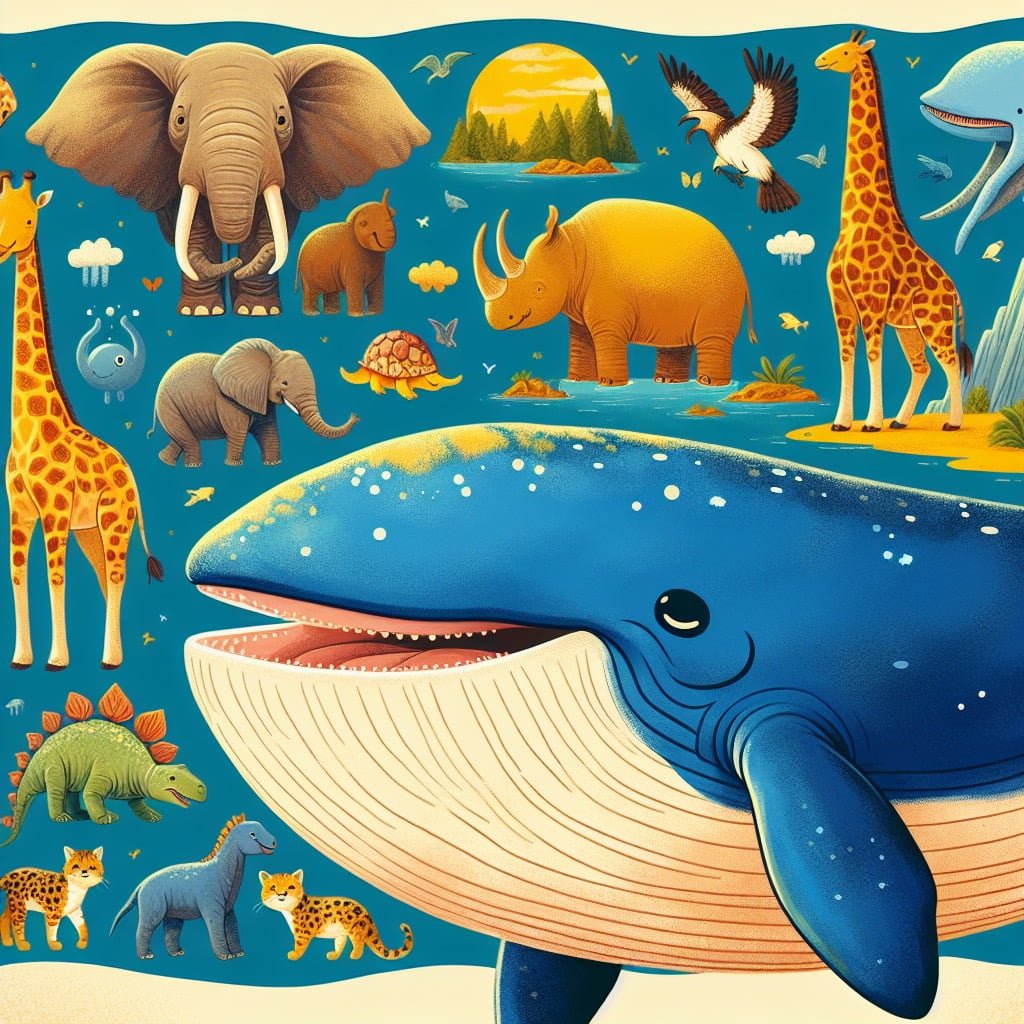
For younger kids: The blue whale is super-duper big and can fit a lot of kids on it!
For older kids: The magnificent blue whale holds the title for being the largest animal on Earth, growing up to 100 feet in length and weighing as much as 200 tons.
Detailed explanation:The Blue Whale holds the title of being the largest animal on Earth, making it a fascinating subject to explore when it comes to ocean facts for kids.
To truly grasp the enormity of the Blue Whale, it helps to understand just how massive these creatures are. They can grow up to 100 feet in length and weigh as much as 200 tons, which is equivalent to about 33 elephants. Their tongues alone can weigh as much as an elephant, and their hearts can be as big as a car. These incredible statistics highlight just how large and majestic these creatures are in the vast oceans.
One of the reasons why Blue Whales are able to grow to such immense sizes is because of their diet. They primarily feed on krill, which are tiny shrimp-like creatures found in abundance in the ocean. Blue Whales have a unique feeding method called lunge feeding, where they take in huge amounts of water and krill in one gulp. This allows them to consume massive quantities of krill in a relatively short amount of time, helping them sustain their enormous size.
Despite their massive size, Blue Whales are peaceful creatures that pose no harm to humans. They are known for their distinctive blue-gray color and loud, low-frequency vocalizations that can be heard over long distances in the ocean. Encountering a Blue Whale in the wild is a truly awe-inspiring experience that highlights the beauty and diversity of marine life.
In conclusion, the Blue Whale’s status as the largest animal on Earth is a testament to the wonders of the ocean and the incredible diversity of marine life. Learning about these magnificent creatures can inspire a sense of awe and appreciation for the natural world, making them a perfect subject for exploring ocean facts for kids.
Ocean Facts For Kids
5. The Ocean Has Mountains and Valleys

For younger kids: There are big underwater mountains and valleys in the ocean!
For older kids: The ocean floor is not flat; it has underwater mountains, or seamounts, and deep valleys known as trenches, some of which are deeper than the Grand Canyon!
Detailed explanation:Ocean Facts For Kids can be truly fascinating, especially when considering the fact that the ocean has mountains and valleys just like the land on Earth. These underwater features are known as seamounts and trenches, and they play a crucial role in shaping the ocean floor.
Seamounts are underwater mountains that rise from the ocean floor but do not reach the surface. They can vary in size, with some towering over a thousand meters high. These seamounts are often hotspots for marine life, as the currents flowing around them bring nutrients to the surface, attracting a diverse range of species.
On the other hand, trenches are deep valleys in the ocean floor that form where tectonic plates meet. The Mariana Trench in the Pacific Ocean is the deepest known trench on Earth, reaching depths of over 36,000 feet. These subduction zones are often accompanied by earthquakes and volcanic activity, making them dynamic and constantly changing environments.
These ocean mountains and valleys are not only important for marine life but also for understanding the Earth’s geology and plate tectonics. By studying these features, scientists can learn more about the history of our planet and how it has evolved over millions of years.
In conclusion, Ocean Facts For Kids can be incredibly exciting when we consider the underwater mountains and valleys that exist beneath the ocean’s surface. These seamounts and trenches are not just features of the deep sea, but they also play a vital role in shaping our planet and supporting a wide range of marine life.
Ocean Facts For Kids
6. The Ocean’s Deepest Point is the Mariana Trench
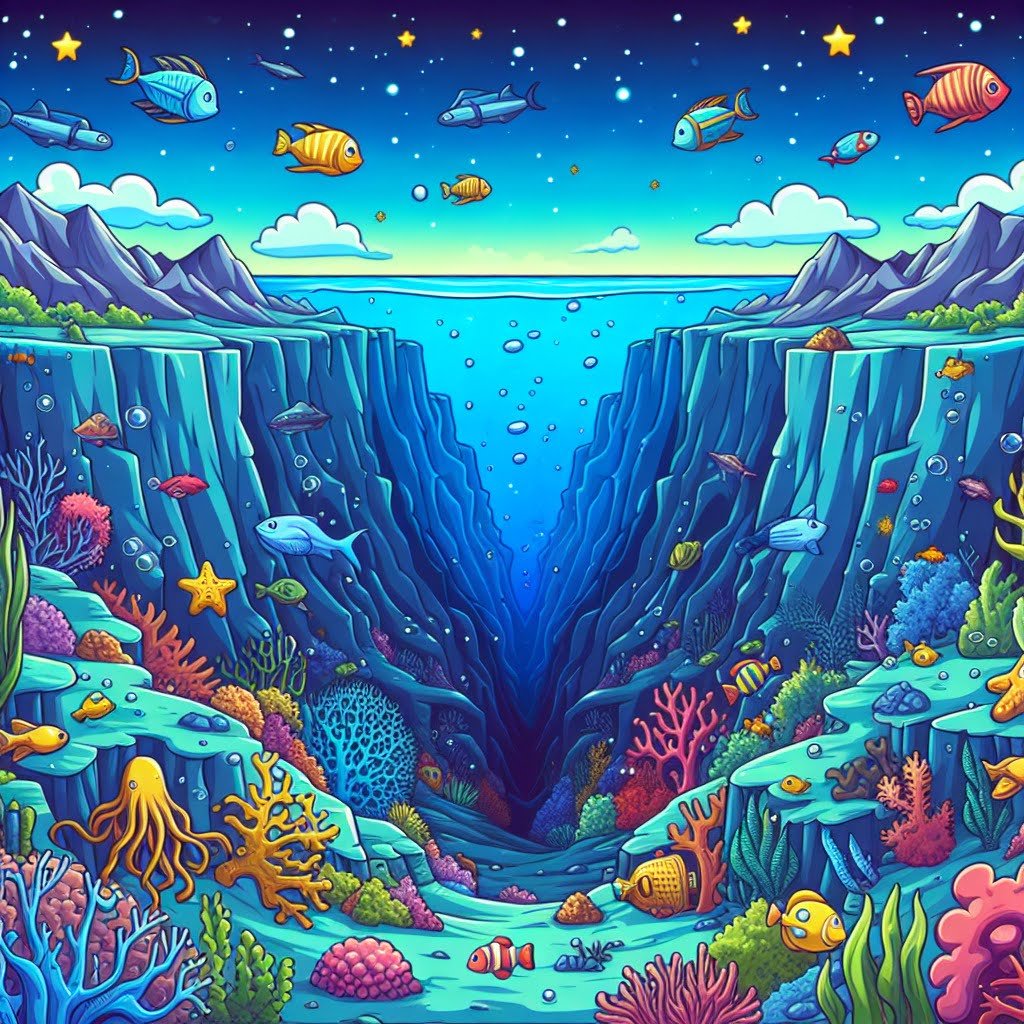
For younger kids: The Mariana Trench is the deepest part of the ocean—super-duper deep!
For older kids: Descending to a depth of nearly 36,000 feet, the Mariana Trench in the Western Pacific is the deepest point on Earth, with pressures so intense that they can crush a submarine.
Detailed explanation:The Mariana Trench is not only the deepest point in the ocean, but it is also the deepest point in the Earth’s crust. Located in the western Pacific Ocean, to the east of the Mariana Islands, this trench reaches a maximum known depth of about 36,070 feet. This incredible depth is a result of the tectonic plates in the region, where the Pacific Plate is being forced underneath the smaller Mariana Plate, creating a deep subduction zone.
One of the most fascinating Ocean Facts For Kids about the Mariana Trench is the incredible pressure that exists at such depths. At the bottom of the trench, the pressure is about 1,086 bars, which is equivalent to the weight of about 50 jumbo jets on a person’s thumbnail. This extreme pressure makes it very difficult to explore the trench and has limited the number of manned expeditions to its depths.
Despite the harsh conditions, the Mariana Trench is home to a variety of unique and fascinating creatures, many of which have adapted to survive in the extreme environment. Some of these creatures include deep-sea fish, giant amphipods, and the elusive Mariana snailfish. Studying these organisms can provide valuable insights into how life can thrive in the most extreme environments on Earth.
Overall, the Mariana Trench is a truly remarkable feature of the ocean, offering insights into the Earth’s geological processes and providing a home to a diverse array of deep-sea creatures. This unique and mysterious trench continues to capture the imagination of scientists and explorers alike.
Ocean Facts For Kids
7. The Ocean Produces Half of Earth’s Oxygen
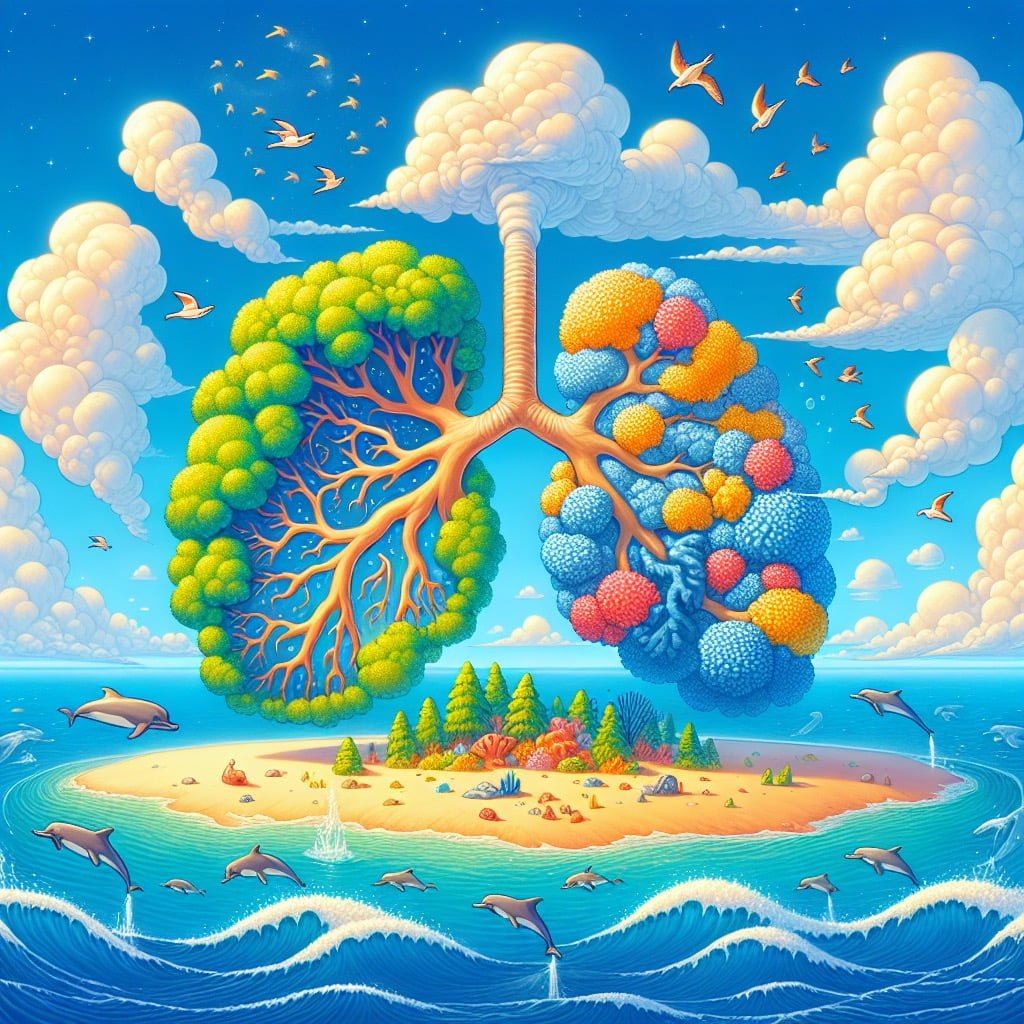
For younger kids: The ocean makes a lot of the oxygen we breathe!
For older kids: Phytoplankton, tiny marine plants, are responsible for generating about half of the world’s oxygen through photosynthesis, making the ocean vital for all life on Earth.
Detailed explanation:One fascinating Ocean Facts For Kids is that the ocean actually produces about half of Earth’s oxygen. This may come as a surprise to many, as we often associate oxygen production with trees and plants on land. However, the ocean plays a crucial role in sustaining life on our planet through the process of photosynthesis.
In the ocean, tiny marine plants called phytoplankton are the primary producers of oxygen. These microscopic organisms use sunlight, nutrients, and carbon dioxide to photosynthesize and produce oxygen as a byproduct. In fact, phytoplankton contribute more oxygen to the atmosphere than all the rainforests combined.
The abundance of phytoplankton in the ocean is key to maintaining a healthy balance of oxygen in the atmosphere. Without these tiny plants, the level of oxygen in the air would decrease, making it difficult for many forms of life to survive.
Additionally, the ocean’s vast size and depth allow for a larger surface area for oxygen production to occur. The mixing of water layers and currents help distribute oxygen throughout the ocean and ultimately into the atmosphere.
This Ocean Facts For Kids highlights the importance of protecting and preserving our oceans. By taking care of the marine ecosystems that support phytoplankton growth, we can ensure a steady supply of oxygen for ourselves and all living organisms on Earth. So next time you take a deep breath, remember to thank the ocean for its vital role in producing the air we breathe.
Ocean Facts For Kids
8. The Ocean Covers About 71% of Earth’s Surface
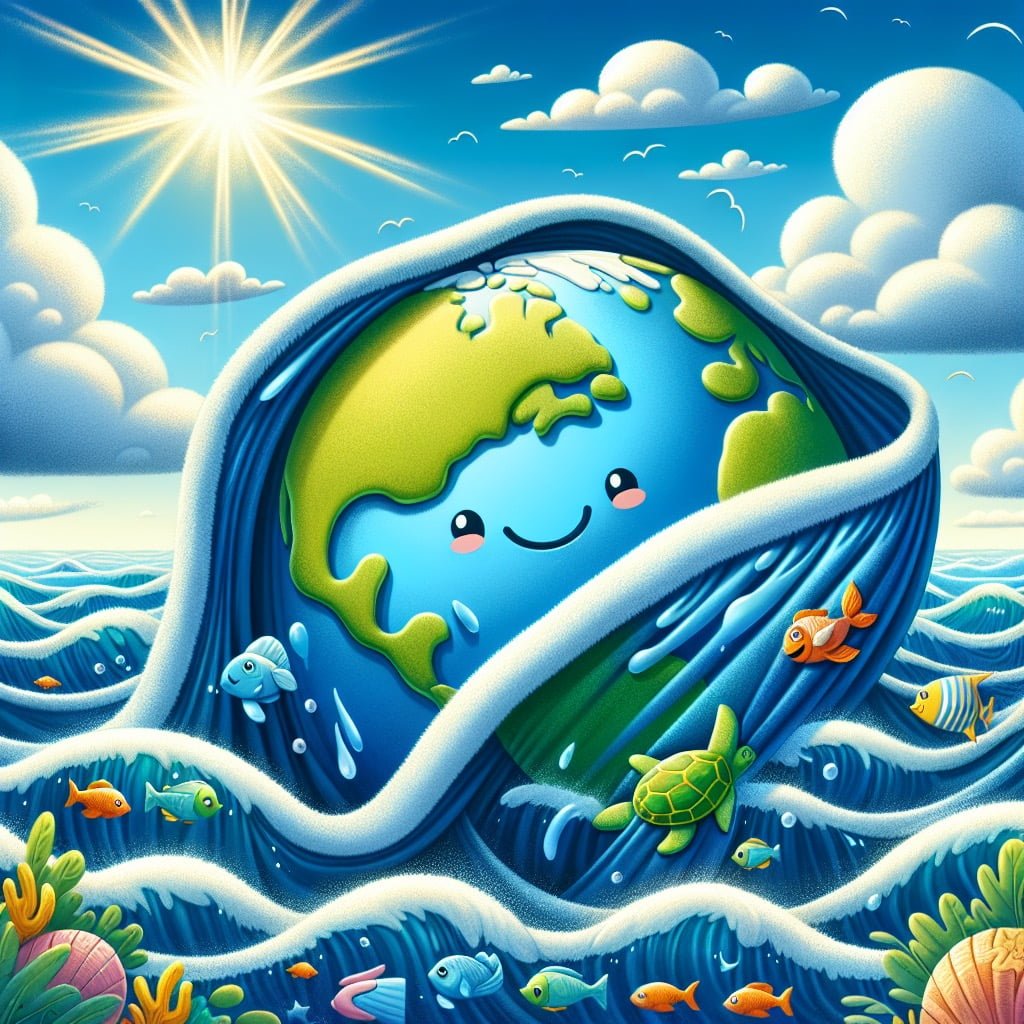
For younger kids: The ocean is like a giant blanket that wraps around most of the world!
For older kids: The Earth’s ocean is vast, covering approximately 71% of the planet’s surface, making it the largest continuous ecosystem on the planet.
Detailed explanation:Ocean Facts For Kids are a fascinating subject to explore, especially when considering that the ocean covers about 71% of Earth’s surface. This fact alone highlights the immense importance of the ocean in the overall makeup of our planet.
To provide some context, the Earth is primarily made up of four major bodies of water – the Pacific, Atlantic, Indian, and Arctic Oceans – with the Pacific Ocean being the largest and the Arctic Ocean being the smallest. These bodies of water are not only interconnected but also play a crucial role in regulating the Earth’s climate, weather patterns, and even the oxygen we breathe.
When we talk about the ocean covering 71% of Earth’s surface, it’s important to note that this vast expanse of water is home to a diverse range of plant and animal life. From microscopic plankton to giant blue whales, the ocean ecosystem is incredibly rich and complex. Moreover, the ocean provides a vital source of food, transportation, recreation, and even medicine for humans.
Understanding Ocean Facts For Kids can also help raise awareness about the environmental challenges facing the ocean today. Issues such as plastic pollution, overfishing, and climate change are threatening the health of our oceans and the creatures that call it home. By educating ourselves and future generations about the importance of the ocean, we can work towards preserving and protecting this valuable resource for years to come.
Ocean Facts For Kids
9. The Ocean Floor Holds Ancient Shipwrecks and Lost Cities

For younger kids: There are old boats and even lost cities at the bottom of the ocean!
For older kids: From shipwrecks to entire lost civilizations, the ocean floor is a treasure trove of ancient artifacts and mysterious sunken ruins that offer a glimpse into the past.
Detailed explanation:The ocean floor is a vast and mysterious place, holding countless secrets from the past. One of the most intriguing aspects of the ocean floor is the presence of ancient shipwrecks and lost cities. These underwater treasures offer a glimpse into the history of maritime trade, exploration, and civilization.
For kids interested in Ocean Facts For Kids, exploring shipwrecks can be a thrilling adventure. Shipwrecks are like time capsules, preserving artifacts and clues about the lives of sailors and passengers who sailed the seas centuries ago. From golden treasures to everyday items like pottery and tools, shipwrecks hold valuable information about the past.
Lost cities, such as the mythical Atlantis, are another fascinating aspect of the ocean floor. These sunken cities are often the stuff of legends, but some have been discovered by underwater archaeologists. These ancient cities offer insights into civilizations that existed long before our own, shedding light on their technologies, customs, and daily lives.
Exploring the ocean floor to discover these hidden treasures is no easy task. It requires specialized equipment, trained divers, and careful planning to navigate the depths safely. However, the rewards of uncovering ancient shipwrecks and lost cities are immense, both in terms of historical knowledge and the excitement of exploration.
In conclusion, the ocean floor is a treasure trove of ancient wonders, waiting to be explored and understood. For kids with a sense of adventure and a love of Ocean Facts For Kids, delving into the mysteries of shipwrecks and lost cities is a thrilling way to learn about the past.
Ocean Facts For Kids
10. The Ocean Is Home to the Kraken, a Legendary Sea Monster

For younger kids: The Kraken is a make-believe monster that lives deep in the ocean!
For older kids: The Kraken is a mythical giant sea creature said to dwell in the ocean’s depths, with stories of its immense size and terrifying power dating back to ancient folklore and legends.
Detailed explanation:In the vast expanse of the ocean, there are countless mysteries and legends that have captured the imagination of sailors and adventurers for centuries. Among these tales is that of the Kraken, a legendary sea monster said to dwell in the dark depths of the ocean. While many dismiss the Kraken as nothing more than a myth, there are some who believe that there may be some truth to the stories.
The Kraken is often described as a massive creature, resembling a giant octopus or squid, with long tentacles and the ability to drag ships and sailors down into the depths. According to some accounts, the Kraken could grow to enormous sizes, with sightings claiming it to be as large as an island or able to wrap its tentacles around entire ships.
While there is no concrete scientific evidence to prove the existence of the Kraken, the ocean is still filled with countless undiscovered species and mysteries waiting to be unraveled. The depths of the ocean remain largely unexplored, with new species being discovered regularly. It is not out of the realm of possibility that a creature like the Kraken could exist in the uncharted waters of the deep sea.
For kids fascinated by the wonders of the ocean, the tales of the Kraken serve as a reminder of the vastness and mysteries of the ocean. While the Kraken may be a legendary sea monster, the ocean is full of real-life wonders and creatures waiting to be explored and understood. As scientists continue to study the ocean and uncover its secrets, who knows what other fantastical creatures may be waiting to be discovered in the depths below.
Did You Know?
The ocean absorbs about 30% of the carbon dioxide produced by humans, helping mitigate the effects of climate change and global warming.
Summary of Ocean Facts For Kids
Ocean Facts For Kids: Dive into the Fascinating World Beneath the Waves
The ocean covers over 70% of Earth’s surface, yet much of it remains unexplored and mysterious. By learning fun facts about the ocean, kids can uncover the amazing creatures, ecosystems, and geological features that make this vast environment so unique. From the incredible journeys of sea turtles to the underwater volcanoes and deep-sea creatures that dwell in the darkness, there is so much to discover and marvel at in the ocean.
Exploring ocean facts can not only spark curiosity and wonder in young minds but also educate them about the importance of marine conservation. By understanding the threats facing our oceans, such as pollution and climate change, children can develop a sense of responsibility towards protecting and preserving this essential part of our planet.
Moreover, delving into ocean facts can inspire a love for science and exploration. Kids can learn about the cutting-edge research being conducted by marine biologists and oceanographers, uncovering new discoveries and pushing the boundaries of knowledge about the ocean. By engaging with the wonders of the underwater world, children may even be inspired to pursue careers in marine science or conservation.
In conclusion, learning about ocean facts is not only entertaining and informative but also essential for fostering a deeper connection to our planet’s most mysterious environment. By delving into the fascinating world beneath the waves, kids can gain a newfound appreciation for the wonders of nature and become advocates for protecting our oceans for generations to come. So, let’s dive in and explore the incredible world of ocean facts for kids!
Sources and additional information for Ocean Facts For Kids
WikipediaBritannicaEnvironmental Protection Agency (EPA)National Oceanic and Atmospheric Administration (NOAA)The Nature ConservancyWorld Wildlife FundEarth Day NetworkGreenpeace InternationalJane Goodall InstituteEnvironmental Protection Agency (EPA)World Wildlife Fund – ConservationNature ConservancyGreenpeaceUnited Nations Environment Programme (UNEP)Conservation InternationalEarthwatch InstituteEnvironmental Defense FundSierra Club
